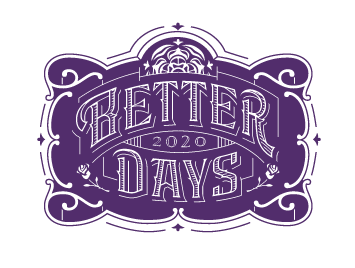Celebrate Women's History All Year Long
By Neylan McBaine, Co-founder and CEO of Better Days 2020
This article appeared in the April 7th edition of The Salt Lake Tribune.
This mural by David Koch hangs in the Utah State Capitol Building and shows Seraph Young casting the first female vote.
Last week marked the end of Women’s History Month, the time each year when social media feeds are full of moving stories of women who beat the odds, marked “firsts” in their industries or inspire us today in their work today. At Better Days 2020, we didn’t let flipping the calendar distract us from a continued focus on excavating and amplifying the stories of women. For us, the time to delve into women’s history is all year long.
Better Days 2020’s mission is to popularize Utah women’s history. We believe studying women’s contributions in the past improves how we lead and grow in the future. Our team has created the most comprehensive resource for studying and teaching Utah women’s history, at utahwomenshistory.org. It is our goal that all Utahns become familiar with not only the women of our past, but the way women and men worked together to accomplish great things.
As we’ve excavated the stories and examined their lessons for today, three particular principles provide fodder for rich reflection.
First, every day women can make history, too. Happily, many historical women are household names: Susan B. Anthony, Harriet Tubman. But as the discipline of women’s history matures, it’s important not only to recognize the “firsts” and the “onlys”, but also the everyday heroes. At Better Days 2020, we’ve worked hard to highlight women previously unamplified.
For example, Fanny Brooks was the first Jewish woman to settle in Utah, a vibrant businesswoman in the frontier community. Ah-Yuen was one of the Chinese people who came to Utah in search of work. As Christopher Merritt of the Utah Division of State History explains in his biography of Ah-Yuen, “So small in number and forgotten in nearly all parts of history, Chinese women were perhaps the most hidden, exploited, and ignored parts of Utah’s 19th century history. Her life represents many of the other Chinese women who came to the United States in search of new lives and opportunities.”
Seraph Young is a woman whose simple action of casting a ballot on Feb. 14, 1870, changed the lives of Americans. As the first woman in the nation to cast a ballot under an equal suffrage law, Seraph holds a remarkable place in history, but she was unremarkable beyond her “first.” As a young schoolteacher, Seraph voted on her way to work. Little is known about her beyond that action. Her name is even misspelled on her headstone.
The second principle is that women’s contributions to our communities are often hiding in plain sight. Have you ever driven past the large grain storage towers west of downtown’s stretch of I-15 that mark the Church of Jesus Christ of Latter-day Saints’ Welfare Square? In 1876, Brigham Young asked one of Utah’s “leading ladies,” Emmeline B. Wells, to organize a program of storing wheat among the women of the church. The grain towers we see today, and by extension much of the church’s welfare efforts, are a direct result of Wells’ work. Similarly, if you’ve ever visited Richmond Park on 600 South, you’ve helped pay tribute to Mignon Barker Richmond, the first African-American to graduate from a college in Utah and the founder of the school lunch program here.
Finally, women’s history, like all history, is complex and messy. Women sometimes worked at cross purposes, had differing motivations and ideologies, and often blundered their way through their collaborations. But for the contemporary student looking to glean lessons from this history, this truth can be comforting.
When women today find themselves at odds with each other, we can remember that Emmeline Wells too complained of “diamond cutting diamond.” In fact, 19th century Utah suffragist Jennie Froiseth felt so strongly that Mormon polygamous women should not vote while polygamy existed that she was willing to forego her own right to vote. A thorn in the side of the LDS suffragists, Froiseth eventually became a great teammate working to include suffrage into the Utah state constitution once polygamy was disbanded in 1890 and past grudges were put aside.
There is no shortage of Utah women from which to draw inspiration. In fact, we think there are enough to celebrate all year long.

